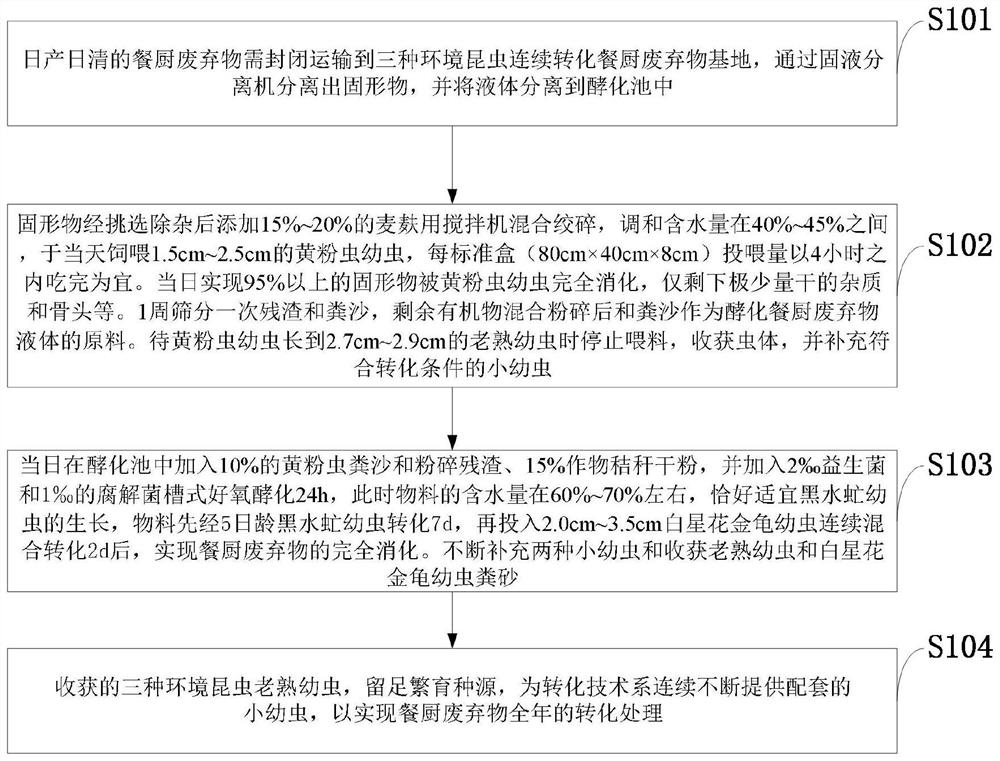A method for the continuous transformation of food waste using three environmental insects
A technology of kitchen waste and insects, which is applied to the treatment, application, and educts of invertebrates, can solve the problems of long conversion cycle, poor application effect of organic fertilizer, low conversion efficiency and benefit of insects in a single environment, and achieve The effect of high-value conversion treatment and ecological benefit win-win
- Summary
- Abstract
- Description
- Claims
- Application Information
AI Technical Summary
Problems solved by technology
Method used
Image
Examples
Embodiment Construction
[0023] In order to make the object, technical solution and advantages of the present invention more clear, the present invention will be further described in detail below in conjunction with the examples. It should be understood that the specific embodiments described here are only used to explain the present invention, not to limit the present invention.
[0024] Aiming at the problems existing in the prior art, the present invention provides a method for continuously transforming kitchen waste by using three kinds of environmental insects. The present invention will be described in detail below in conjunction with the accompanying drawings.
[0025] Such as figure 1 As shown, the method for utilizing three kinds of environmental insects to continuously transform kitchen waste provided by the embodiment of the present invention comprises the following steps:
[0026] S101: The kitchen waste from Nissan Nissin needs to be sealed and transported to the three environmental ins...
PUM
 Login to View More
Login to View More Abstract
Description
Claims
Application Information
 Login to View More
Login to View More - R&D
- Intellectual Property
- Life Sciences
- Materials
- Tech Scout
- Unparalleled Data Quality
- Higher Quality Content
- 60% Fewer Hallucinations
Browse by: Latest US Patents, China's latest patents, Technical Efficacy Thesaurus, Application Domain, Technology Topic, Popular Technical Reports.
© 2025 PatSnap. All rights reserved.Legal|Privacy policy|Modern Slavery Act Transparency Statement|Sitemap|About US| Contact US: help@patsnap.com


